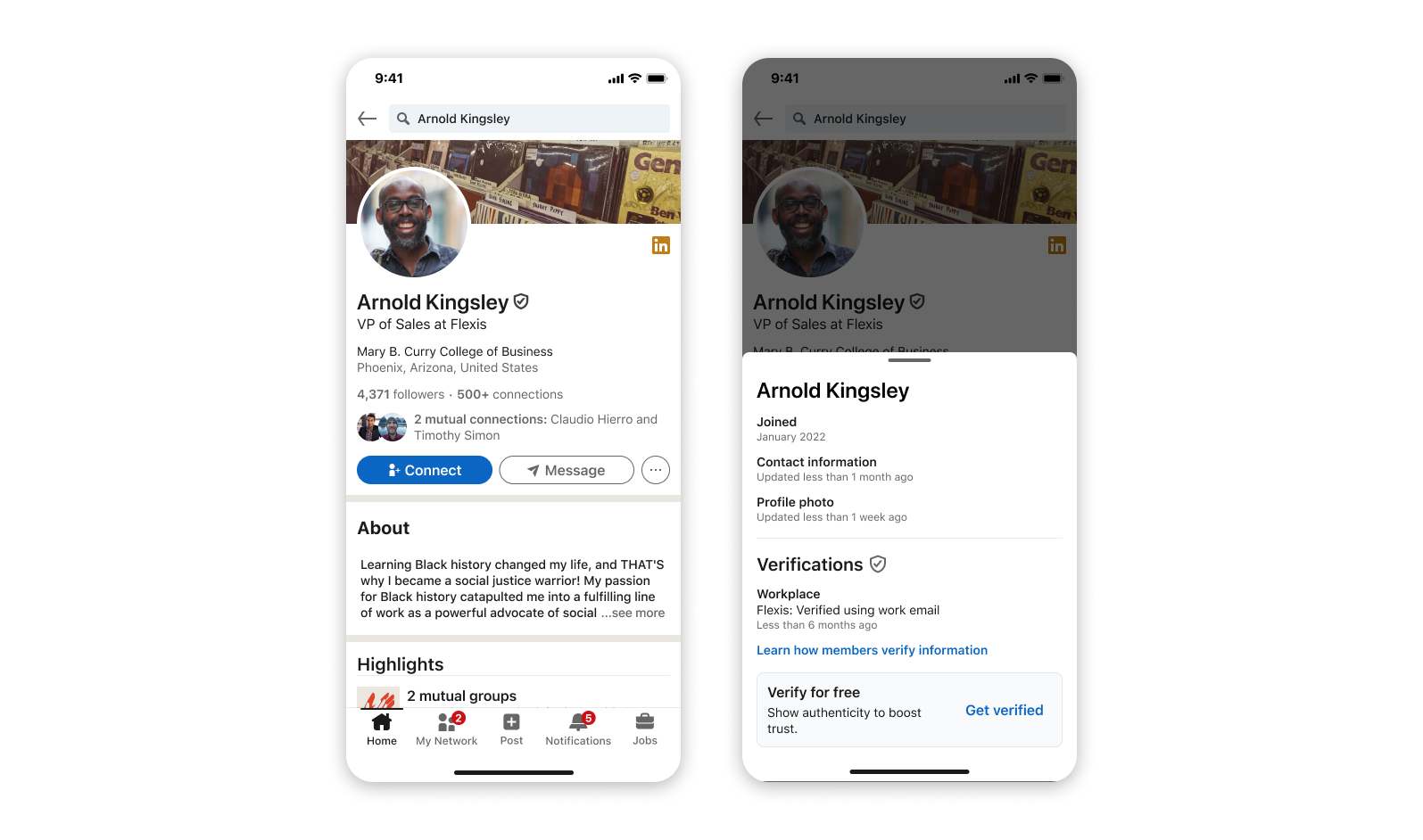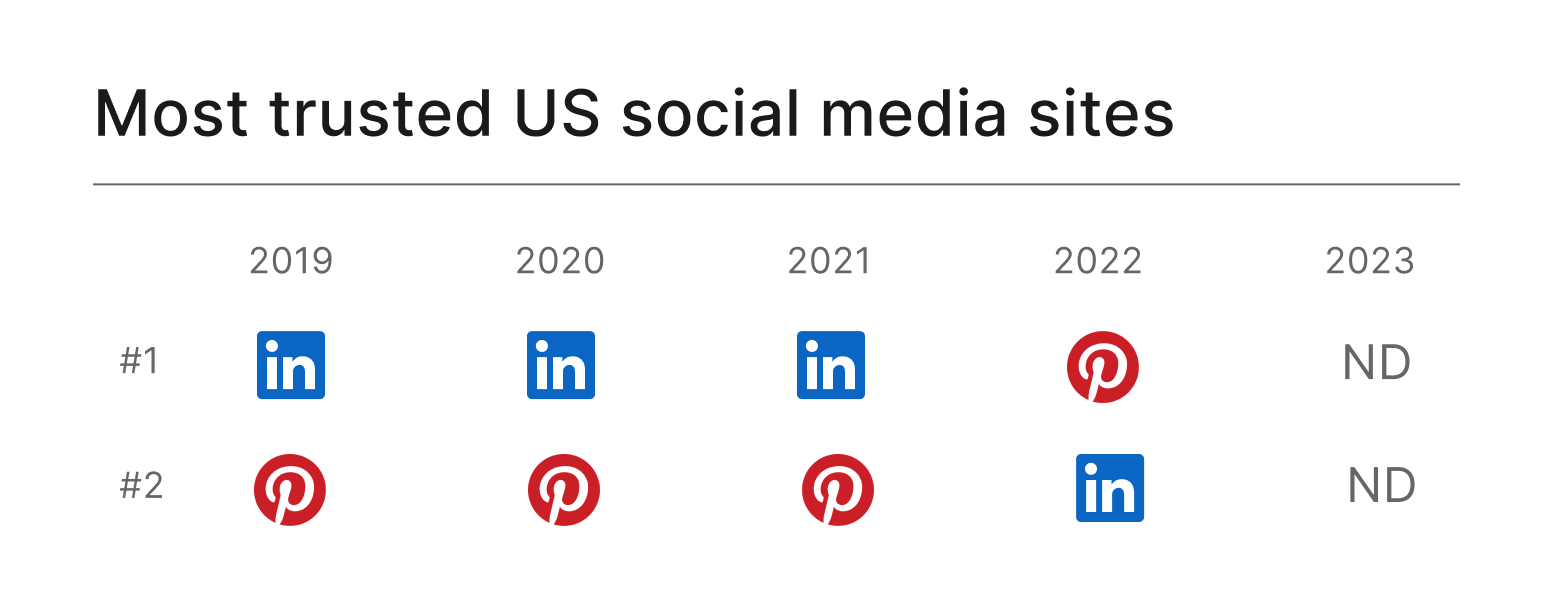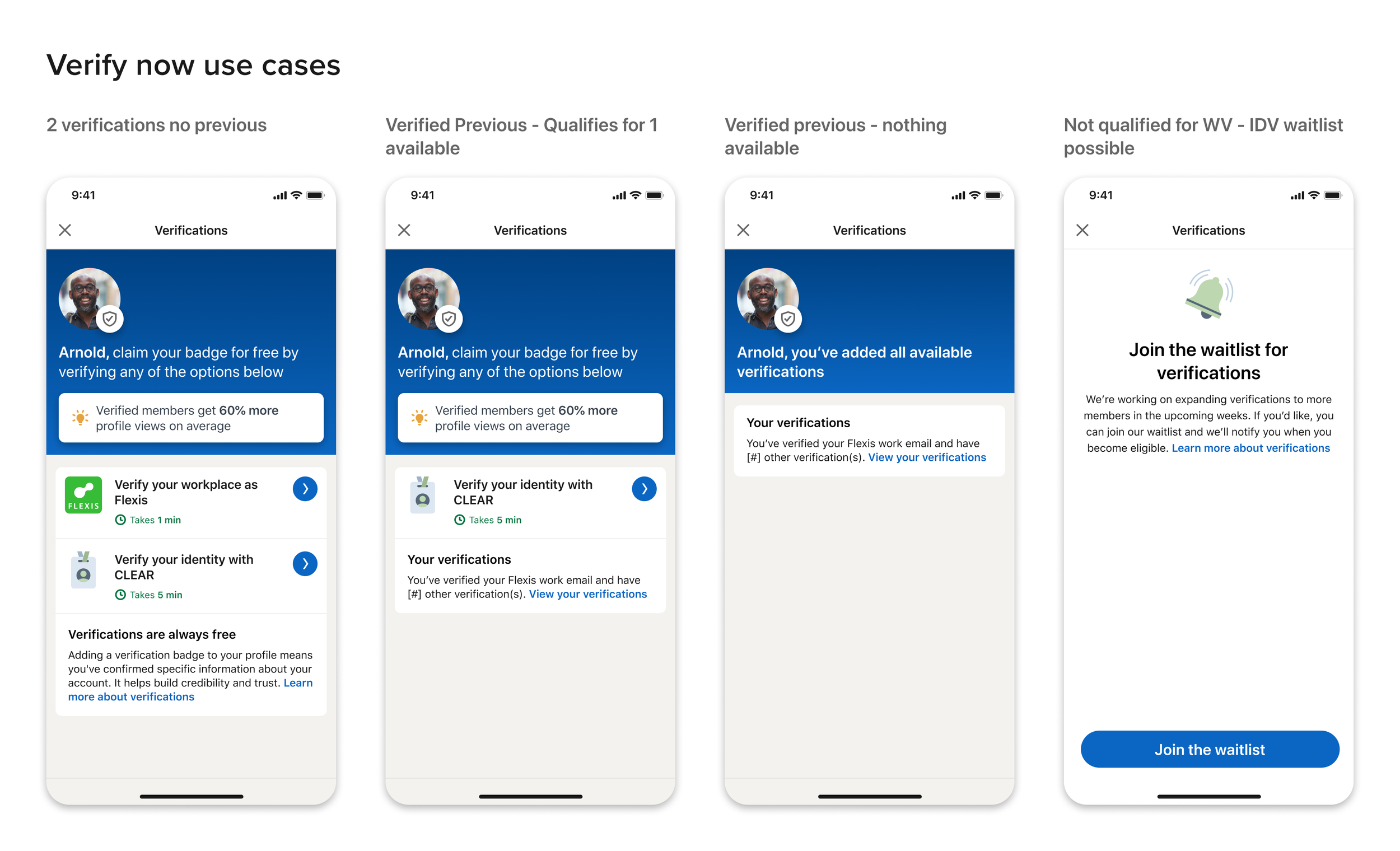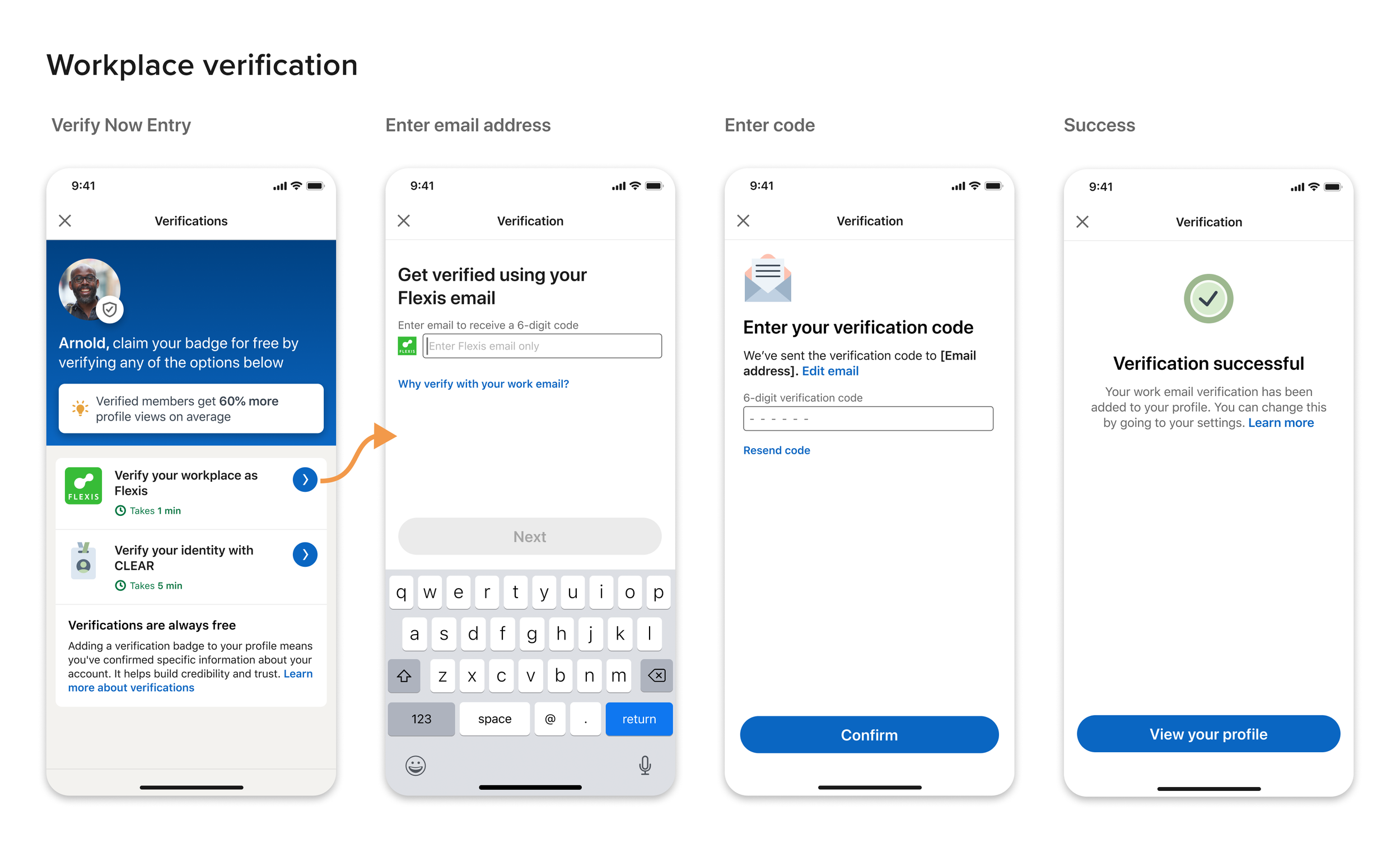A proactive defense against bad actors, employing cutting-edge methods to enhance profile authenticity, making LinkedIn the social media platform with the highest number of verified members.
LinkedIn has long been regarded as one of the most trusted social media platforms, with data since 2017 consistently supporting its reputation. However, the rise of fake accounts and the increasing use of generative AI have started to erode this trust, causing members and recruiters to question the authenticity of profiles.
My Role
Project Details
- My role: Lead designer
- Total designers: 3-4
- Project duration: 1.5 years
As the principal designer on the Trust team, I led the product design for the Verifications project. My responsibilities included contributing to project strategy, designing quality product experiences, and supervising a team of two to three designers. I worked closely with cross-functional partners across various product lines, making sure there was alignment amongst these different team. All of this effort was aimed at making the verification process and display of verification intuitive and efficient.
Project Structure
The project was structured around three main tracks: Access, Adoption, and Value.
Access
Sankey visualization of the CLEAR verification flow
The goal of the access track was to ensure that the majority of LinkedIn members had access to some form of verification. This involved designing a system that was inclusive and widely available.
There are 3 main forms of verification:
Workplace (email based)
Education (email based)
Identity CLEAR & Persona (ID and live photo based)
Adoption
A data funnel prototype to visualize drop off at each part of the flow.
The adoption track ensured we had engaging entrypoint points for members to find verifications. Tracking, measurement and iteration was key for this track as we needed to optimize interactions and content to make sure we had a pipeline of members going through the 3 main verification types.
Value
The value track was the most challenging of the three tracks. While the true value for members lies in the network effect of millions of verified LinkedIn members, it was initially difficult for some members to see the benefits of verification when they were not seeing other members verified.
At the start of the project, determining where the verification badge would be displayed was highly contentious and involved numerous rounds of discussions with executive leadership. Shown in the gallery are all the variations from each round. The last in the series was live for five months until the current version, which follows the convention seen on other social media platforms of placing an icon next to the member's name.




















